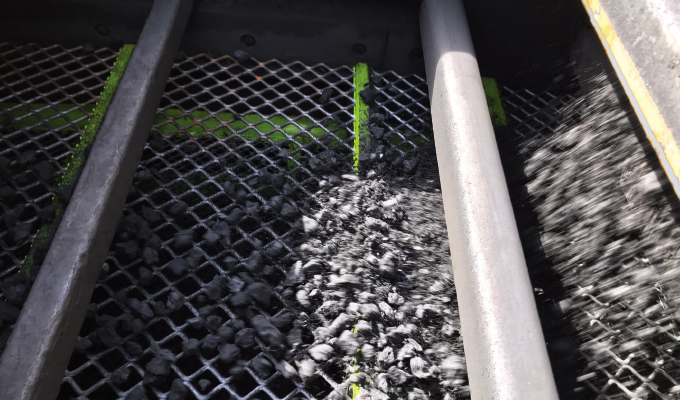As operations begin to slow down in the fall, it’s a great time to reevaluate maintenance and training procedures to ensure optimum plant efficiency and product quality. Because, when it comes down to it, it doesn’t matter how much material is produced in a day if it’s not meeting spec.
Though screen media is a minor cost when compared to larger equipment in a quarry or mine, it is a crucial part of any operation’s profit machine. One unexpected break and thousands of dollars can be lost in terms of downtime and repairs.
For that reason, producers need to put a larger focus on proper screen media maintenance. Best practices result in fewer changeouts, less unplanned downtime, higher quality product, and a more efficient operation. Here are a few things to consider:
1. DON’T SLACK ON INSTALLATION
It’s not uncommon for an operation to send the newest crew member to complete the undesirable job of screen media changeouts, but the task benefits from someone with a bit more experience. The best screen media in the world won’t do any good if it’s installed incorrectly. This could mean improper tensioning or even installing it the wrong way around, something that happens more often than it should. The resulting issues can include accelerated wear, panels broken too soon, and just overall inefficient screening.
While specifics vary depending on the type of media, there are a few overall best practices for screen media installation. To start, clean and check the condition of components that touch the screen, make sure that the screen panel matches what was ordered, and install the screen based on instructions from the manufacturer. During installation, make sure each support bar touches the screen and that the tension matches manufacturer recommendations.
Consider looking into screen media installation and maintenance training seminars to prolong screen life. Manufacturers often offer the service either through site visits or via a nearby dealer. The benefit will be a crew with shared knowledge of proper installation that could be worth thousands in unexpected downtime prevention.

2. KEEP AN EYE ON THE SCREEN
Once installed correctly, it’s still best to check screen media at least weekly to make sure tensioning is proper and the panels aren’t showing unusual signs of wear. A little bit of extra time during routine preventive maintenance can have a noticeably positive effect on profits.
While checking tension, also look at the clamp bars themselves. Check for wear, corrosion or cracks, and examine the rail for straightness, which is necessary for even tension. Examine all nuts and bolts and replace any that are worn, stripped or corroded. Shaker bolt threads with excess buildup can be cleaned by running them across a wire wheel. Also, replace clamp bars that are thin or caving in to greatly improve screen media wear life and be sure to choose OEM versions for proper operation.
3. UTILIZE DIAGNOSTIC TOOLS
Diagnostics systems can help prolong media life and improve screening by checking and monitoring a machine’s health. Use a vibration analysis system to inspect the machine for balance and excessive vibration, which can lead to screen media failure or unintended machine wear. Vibration analysis systems are becoming easier to use. Some only require a single, wireless sensor and allows access to results via a smartphone or tablet.
CLOSING THOUGHT
Though minor compared to the rest of an aggregate or mining operation, producers benefit from staying proactive with screen media maintenance. Following basic preventive maintenance practices can mean less downtime, fewer headaches, and more profits.

About the Author:
Matthew Armstrong is MAJOR’s business development analyst. MAJOR is an innovative global manufacturer of wire screens for the aggregate, mining and recycling industries. FLEX-MATˇ, the company’s renowned line of distinctive lime-green high vibration screens made with OPTIMUMWIREˇ ™The longest-lasting wire∫ sets the standard in lowering cost of production per ton by dramatically increasing throughput and wear life while eliminating blinding and pegging. MAJOR masters wire quality, screen manufacturing and the screening process, and provides on-site screening performance assessment and training seminars on screen maintenance and screening efficiency to help producers increase their screening performance and profitability. MAJOR is a Haver & Boecker company. For more, visit www.majorflexmat.com.
Modern Contractor Solutions, December 2022
Did you enjoy this article?
Subscribe to the FREE Digital Edition of Modern Contractor Solutions magazine.



